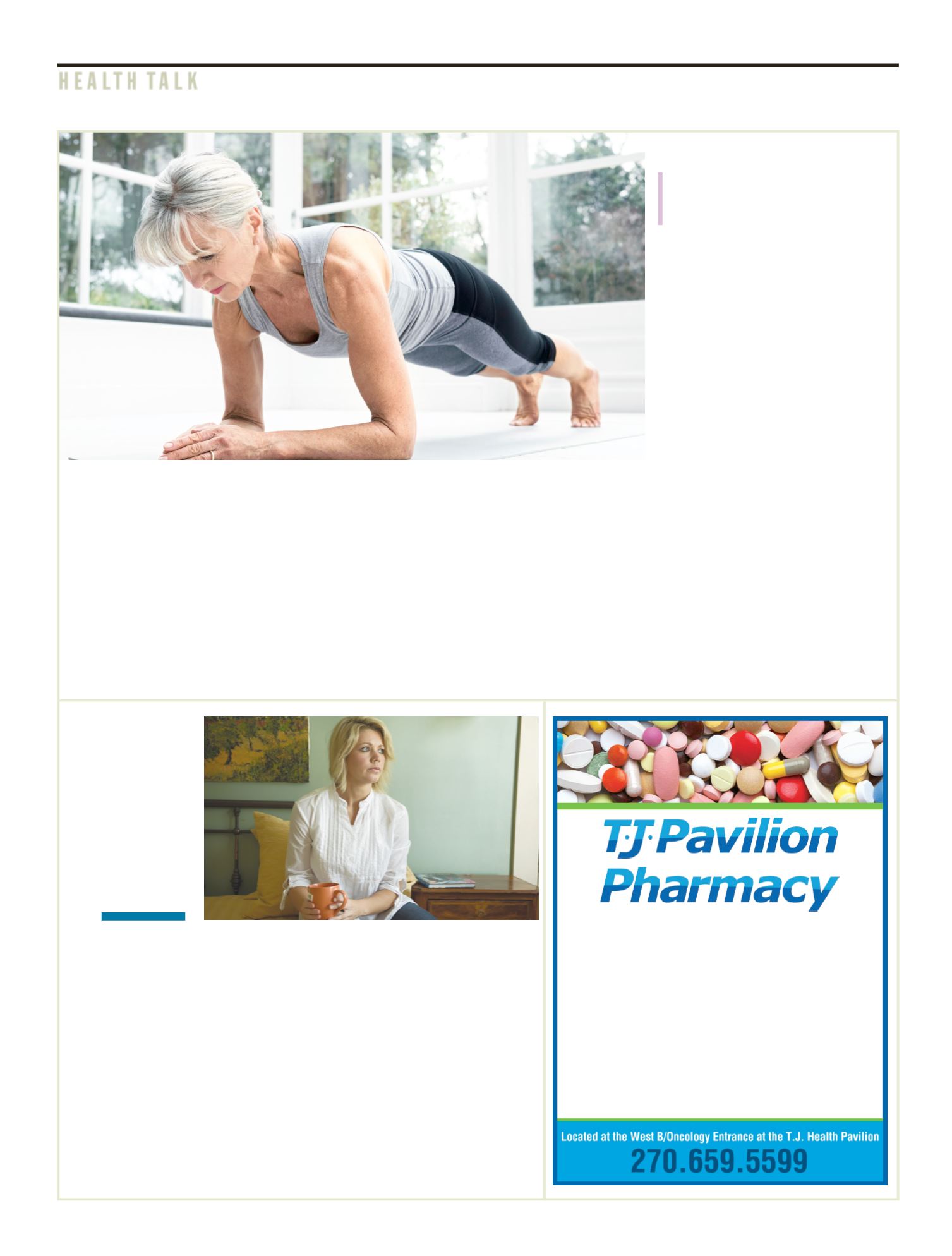

N E W S , V I E W S & T I P S
H E A L T H T A L K
6
D E S T I N A T I O N H E A L T H
F E B R U A R Y 2 0 1 7
Can you predict your mood by the calendar?
In late fall or early winter—as the days grow
darker—does your mood darken too? And do you
feel like yourself again several months later when
there’s plenty of sunlight?
If this pattern sounds familiar, you may have
what doctors call seasonal affective disorder
(SAD).
SAD is a type of depression that comes and
goes like clockwork, often starting in October or
November and going away by spring. Its main trig-
ger appears to be shorter days, which disrupt the
body’s internal clock and may affect serotonin—a
brain chemical that helps regulate mood.
Symptoms of SAD include:
●
●
Feeling hopeless or irritable.
●
●
Feeling tired during the day.
●
●
Oversleeping.
●
●
Craving carbohydrates.
●
●
Gaining weight.
Highly treatable
If there’s any chance SAD is
affecting you, tell your doctor. Research shows
that light therapy—a treatment using artificial
light—eases SAD symptoms for most people
within a few weeks of starting it.
Typically, this therapy involves sitting in front
of a box that emits a very bright light for 30 min-
utes every morning—and doing so faithfully well
into the spring.
And when light therapy isn’t effective by itself,
doctors may combine it with antidepressants, talk
therapy or both.
Sources: National Alliance on Mental Illness; National Institutes of Health
Beat
back
winter
blues
Continuingto serveyour healthcare needs in one convenient location.
PHARMACY HOURS:
Monday through Saturday
8 a.m. to 8:30 p.m.
Sunday
8 a.m. to 6 p.m.
Convenient Hours
&
Location
Drive-thruat WestA/Urgent Care Entrance
Fast
&
Friendly Service
To your good health—simple things help
make healthy aging possible
ave you noticed that the numbers in the phone
book seem to be getting smaller? Do you find it
harder to get down on your knees to look under
the bed—and to get up again?
There’s no question that age brings changes to our
lives. And yes, some of them we’d prefer to avoid.
Physically, for example, stiffening joints can
make it harder to get around. And many people
find that their short-term memory just isn’t what
it used to be. Often, difficult personal situations,
such as the death of a spouse, can add to the
negative changes.
But age can bring positive changes too. One
survey found that many older people say they
have less stress and more time for family, interests
and hobbies than they used to. In fact, the vast
majority of older people report they are satisfied
with their lives.
To a great extent, what older age will be like
for you depends on how you live now and how
you cope with the changes that come your way.
You may not be able to turn back time, but you
can move in a direction that may make getting
older easier and more pleasant. Here are a few
pointers:
Decide to have an active mind and body.
Re-
member the adage “Use it or lose it.”
Opt to be involved.
Isolation can contribute
to depression and other health problems. So keep
connected to family and friends. Social connec-
tions can help ensure that you have physical and
emotional support for what comes your way.
Choose a healthy lifestyle.
The advice you
heard when you were younger still applies: Eat
well, maintain a healthy weight, get enough rest,
don’t smoke, do what you can to stay safe and see
your doctor regularly.
Relish your leisure time.
Do things you enjoy,
and allow yourself some downtime. Too much
stress can contribute to a host of health problems.
Practice healthy ways to cope.
Believe in
yourself, and remember: You can handle whatever
comes your way.
Sources: AGS Foundation for Health in Aging; Centers for Disease Control and
Prevention; Mental Health America; Pew Research Center
Decide to have an active
mind and body. Remember the
adage “Use it or lose it.”
H
















